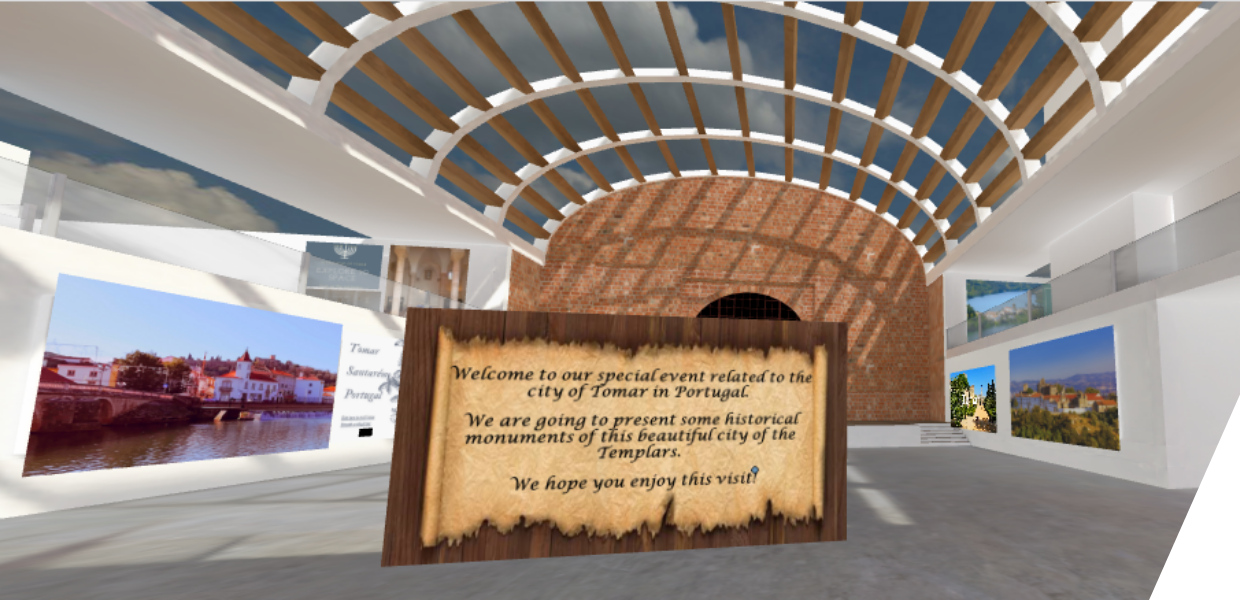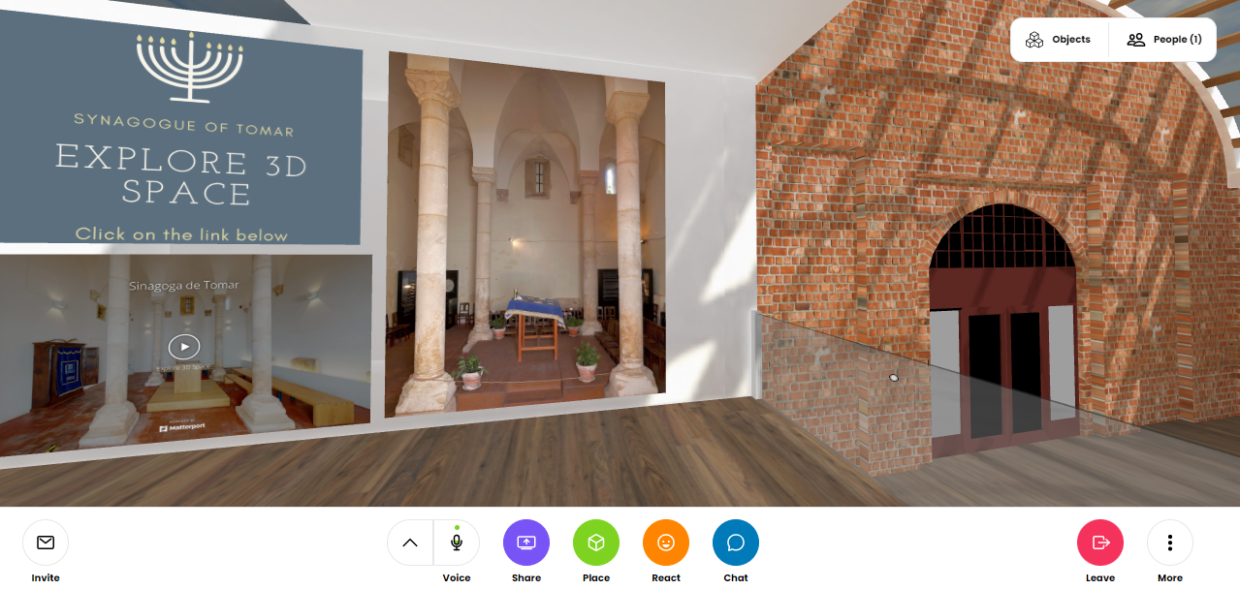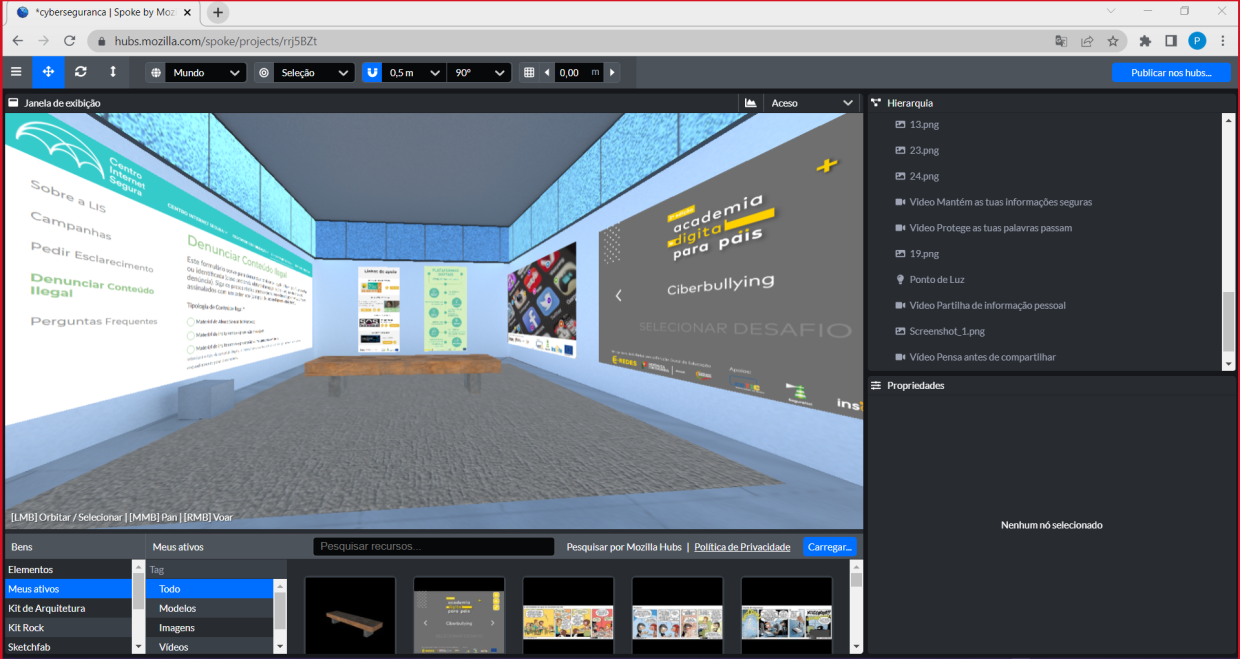Você pode nos falar sobre sua instituição?
A minha instituição, Agrupamento de Escolas Nuno de Santa Maria, está localizada em Tomar, Portugal. É um Agrupamento vertical que oferece desde a educação pré-escolar ao ensino secundário. É constituído por 15 estabelecimentos de ensino ou de educação.
Por que você se inscreveu para participar do Built with Bits?
Os meus principais objetivos ao iniciar o programa foram sensibilizar os meus alunos de multimédia para a área da realidade virtual. Mas, claro, fazer parte da comunidade europeia de educação com esta visão de construir uma comunidade internacional de educadores empenhados na utilização de práticas pedagógicas disruptivas para ajudar a Europa a avançar para novas formas de pensar, criar e viver em conjunto de forma sustentável é, para mim, uma visão fantástica e inovadora, na qual não poderia deixar de tentar participar.
Conte-nos sobre sua entrada vencedora!
É para mim uma enorme honra que o projeto com que participei neste programa seja um dos vencedores. O título deste projeto é monumentos históricos de Tomar e consiste em disponibilizar conteúdos multimédia num espaço do Modzilla Hubs relacionados com os vários monumentos históricos desta cidade.
Este projeto surgiu no âmbito dos conteúdos programáticos da disciplina de Técnicas de Multimédia, da qual sou professora. Tendo sido muito fácil cativar a atenção dos meus alunos do curso profissional técnico de multimédia, para este tema da realidade virtual.
No entanto no âmbito da flexibilidade curricular, que é um projeto educativo que está a ser implementado a nível nacional em Portugal, envolvemos também os alunos do décimo ano do curso profissional técnico de turismo que ao trabalhar em conteúdos tais como o património local e regional implicou que estes alunos gravassem visitas guiadas a mais alguns monumentos e posteriormente articulando com os alunos do curso profissional técnico de multimédia, tratassem e editassem estas mesmas visitas com softwares de edição de som e de imagem. Neste momento estas visitas guiadas já estão concluídas e editadas em língua portuguesa e prontas para serem adicionadas ao projeto.
Como seu projeto usou o patrimônio cultural digital e as tecnologias imersivas?
Este projeto está em linha com os conteúdos dos cursos de técnico multimédia e técnico de turismo, combinando digital e história. Como esta cidade, é um lugar tão rico na história que vai desde o castelo dos Cavaleiros Templários, até à Sinagoga de Tomar, é muito interessante e enriquecedor colocar estes estudantes de diferentes cursos a trabalhar colaborativamente na construção de visitas virtuais aos monumentos históricos da cidade, disponibilizando-os à comunidade.
Como o programa aprofundou sua compreensão da 'New European Bauhaus'?
Neste momento, no projeto, temos referência a alguns recursos da New European Bauhaus, tais como os relacionados com o Convento de Cristo que foi classificado como património da humanidade e inscrito na lista do património mundial da UNESCO. Na minha opinião, todos os recursos disponibilizados pela New European Bauhaus, são de enorme interesse educativo, histórico e cultural e, com imensa qualidade. Estes recursos, devem ser conhecidos pelos vários professores e educadores pois podem e devem ser transmitidos aos seus alunos.
Considero que este programa no âmbito do movimento do New European Bauhaus da Comissão Europeia foi uma experiência de aprendizagem colaborativa recorrendo a tecnologias digitais muito, mas mesmo muito, enriquecedora, quer para os professores, quer para os alunos.
Dado que 2022 é o Ano Europeu da Juventude, já considerou outras formas de envolver estudantes e jovens no seu projeto vencedor?
Sim, claro que sim. Aliás, esse é um processo ao qual já dei início, ou seja, as visitas virtuais criadas pelos alunos em língua portuguesa, já estão a ser objeto de edição, no sentido de acrescentar legendas, neste momento em Espanhol e posteriormente em Inglês.
Para além disto, uma das minhas alunas, a Patrícia Bandeira, do curso profissional Técnico de Multimédia, que também participou no projeto vencedor, gostou tanto e ficou de tal forma inspirada, que neste momento está a construir o seu projeto final com o Mozilla Hubs, cujo tema é a sensibilização para navegar em segurança na internet. Este seu projeto é dirigido, também, a toda a comunidade escolar.
Qual foi a coisa mais valiosa que os educadores aprenderam com o programa?
Foi muito enriquecedor participar neste programa de mentoria, que ao combinar experiências de aprendizagem colaborativa e tecnologias digitais com os valores de acessibilidade, inclusão e sustentabilidade, ajudou educadores e professores de vários países e com culturas diferentes. Para além de perceberem que é possível interligar todos estes conceitos, consideram muito valioso terem tido a oportunidade de os aplicar na prática.





